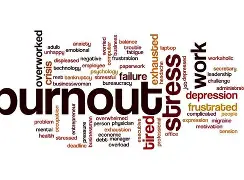Trust, Not Surveillance: The Secret to High-Performing Hybrid Teams

I walked into a client’s office last year and saw something I couldn’t unsee.
Three huge monitors displayed heat maps showing when employees were active on their computers. Green meant typing or mouse movement. Yellow meant “idle” for 3+ minutes. Red meant offline. The executive proudly called it their “productivity dashboard.”
Two months later, they couldn’t figure out why their top performers were quitting.
After helping hundreds of organizations navigate the hybrid transition, I’ve found that success has surprisingly little to do with fancy technology or detailed policies. It’s about something far more fundamental: trust.
The Trust Paradox
Here’s the disconnect that’s baffling executives everywhere: 71% of leaders lose sleep worrying about remote productivity, yet companies with trust-based policies consistently outperform control-focused ones by 23% on key metrics.
I call this the “hybrid trust paradox” – the harder organizations try to monitor remote workers, the worse their productivity and engagement actually become.
The data is undeniable. Stanford’s research found that high-trust cultures report 74% less stress, 106% more energy, 50% higher productivity, and 13% fewer sick days. These benefits aren’t just marginal improvements – they’re competitive differentiators.
Three Trust Pillars That Actually Work
1. Results-Based Accountability
The organizations crushing it in hybrid environments have made a fundamental shift. They’ve stopped measuring inputs (hours logged, keyboard activity) and started measuring what actually matters: results.
This requires:
- Clear success definitions: Not vague expectations but crystal-clear descriptions of what excellence looks like, regardless of where work happens.
- Milestone check-ins that help: Not “justify your existence” meetings but collaborative problem-solving around meaningful progress markers.
- Transparency that empowers: Making progress visible to teams creates organic peer accountability that feels nothing like surveillance.
I watched a technology client ditch their time-tracking software for outcome-based metrics last quarter. Project completion jumped 27% while employee satisfaction shot up 34%.
2. Technology That Enables, Not Surveils
The tools you choose speak volumes about trust. Companies building genuinely high-trust environments:
- Embrace asynchronous work: They don’t expect immediate responses or constant green status indicators. They let people work at their peak productivity times.
- Build digital collaboration spaces: Not just communication channels but true knowledge-sharing platforms where creativity happens across locations.
- Invest in connection tech: Not monitoring tools but platforms specifically designed to maintain the social bonds that happen naturally in offices.
- Avoid surveillance software like the plague: Every keystroke monitoring tool, random screenshot system, or always-on video requirement screams “we don’t trust you.” And people respond accordingly.
A healthcare client reluctantly abandoned their “employee monitoring solution” after skyrocketing turnover. Within three months of switching to outcome-focused project tools, voluntary departures dropped 26% while productivity actually improved 31%.
3. Deliberately Building Culture
In physical offices, culture develops through thousands of micro-interactions. In hybrid environments, it requires intention:
- Create meaningful connection points: Not forced fun but structured opportunities for genuine connection beyond work transactions.
- Develop recognition rituals: Systematic celebration available to everyone, not just the people who happen to be in the office on pizza day.
- Communicate with radical transparency: Consistent information sharing that prevents remote workers from developing the “out of sight, out of mind” paranoia that kills engagement.
- Cultivate psychological safety: Creating environments where people take risks and share dissenting views without fear, regardless of location.
A financial services client implemented weekly “coffee roulette” pairings and monthly recognition-focused all-hands. Their engagement scores jumped 23 points in six months.
A Trust Transformation Story
A marketing agency came to me with a classic hybrid mess. Office employees resented remote colleagues who they thought weren’t working hard enough. Remote folks felt constantly under suspicion and cut out of important conversations.
Their transformation wasn’t rocket science:
- They redefined performance around client outcomes, not activity levels.
- They established “location-neutral” meeting protocols that gave everyone equal voice.
- They built transparent workflows where everyone could see progress without asking.
- They created genuine connection points that didn’t feel like obligatory Zoom happy hours.
Six months later? Cross-location resentment had practically vanished, and they reported their highest quarterly performance in three years.
The Leadership Challenge
This shift requires something that’s in short supply: courage. Leaders succeeding in hybrid environments:
- Show vulnerability first – creating psychological safety through their own transparency.
- Communicate obsessively – preventing the information gaps where distrust grows.
- Judge outcomes, not hours – focusing evaluation on what matters.
- Build relationship capital deliberately – creating connections strong enough to withstand distance.
A Trust-First Future
As hybrid work becomes our permanent reality, competitive advantage will increasingly belong to organizations brave enough to trust their people first. Those still chasing control through surveillance will struggle with turnover, innovation deficits, and talent acquisition.
The research is clear: your team can absolutely be productive without constant monitoring. The real question is whether your leadership is ready to embrace the approaches that unlock their full potential.
What’s one step you could take toward trust-based leadership this week?


